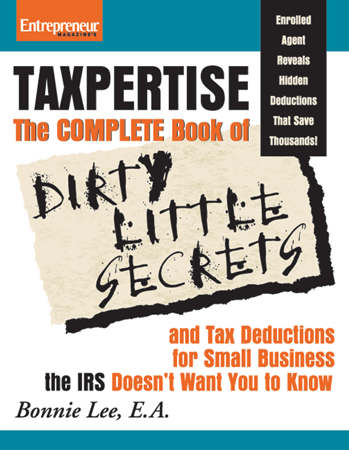I trust everyone had a safe and fun 4th of July weekend! I went to the plaza here in downtown Sonoma and enjoyed the parade. Talk about a Norman Rockwell setting and slice of life. Well, when my husband and I were setting up our chairs, who happened to be right next to me but a good business associate. Not a client but a networking buddy. We chatted, ran over to Steiner’s and had a bloody Mary together. Hung out at the BBQ in the plaza afterwards. Never did talk business but we cemented our relationship a little more. He’ll remember me when it’s time to refer clients.
So what do you think? Can I write off that Bloody Mary? Can I write off the hot dog and potato salad? Is this a deductible business entertainment expense?
Well, I hate to burst your bubble, but a smug IRS agent quizzing you about this scenario would joyfully proclaim, “Disallowed!” There are rules. And essentially, the rules say, “If you’re having way too much fun, it’s not a deductible expense.” But let me quit mincing words here and give you the real lowdown.
Rule #1 – First of all, any entertaining you provide must be directly related to the active conduct of your business or associated with a directly related discussion that preceded or followed the meal or entertainment. This means that hanging out with a business associate or even a client simply to promote goodwill is not deductible nor is giving a party for the sake of establishing goodwill. In order to deduct the cost of entertainment, you must conduct business before, during, or after the event. So we’re talking product demonstration, reveal of a new product or service, or a sales pitch. And the environment must be conducive to conducting business. The IRS believes it is impossible to convince a table-dancing drunk with a lampshade on his head to try your new and improved product.
The IRS once disallowed the write-off of tickets to a baseball game because the loud atmosphere at a ball part does not allow for a comprehensive business discussion.
And giving a sales pitch at the end of a party is much like talking politics with sugar infused 5-year-olds. As a write-off, it’s not going to fly.
Rule #2 – The guest list determines the extent to which you can write off an event. Given you are following Rule #1, you have a 100% write off if:
- The party is open to the general public, or
- The party is for employees and their spouses.
You follow the 50% limitation rules that apply in general to meals and entertainment and write off half the cost if:
- The party is for customers and prospective customers and/or
- Independent contractors associated with your firm (they cannot be classified as employees for this purpose).
There is no write off for attendance by family members even if they are employees or owners. The expense is considered personal and no deduction is allowed. If there is a mix of employees customers and family members, allocate the expense and deduct accordingly. For example, if 10 employees and 30 customers attend, and the party costs $400, you may deduct 100% of 25% of the cost (employees) and 50% of the remaining cost (customers). And you thought there’d be no math. Sorry about that. Your deduction works out to $100 (cost allocated to employees) + $150 (cost allocated to customers) for a total write off of $250.
Rule#3 The entertainment may not be “lavish or extravagant.” That’s another one of those subjective, gray areas that can be argued to death with an auditor, his manager, all the way up to tax court. But why go there? Keep it simple. If your company grosses $100k a year, you likely shouldn’t be helicoptering in your guests. You get the picture.
It’s fine that you follow the rules, but proving you did is another matter. You want to have documentation to prove your case in the event of audit. Here are some tips:
- Make sure the invitation announces a business purpose. Such as “Brunch on us! Test drive our new cholesterol-free egg beater omelets.”
- Keep a guest list. Have attendees sign a guest book or track RSVPs so you can prove an accurate allocation of the expense.
- Take pictures of guests looking at your new products or a video clip of your product demonstration; anything that proves the business purpose.
- Keep all receipts for all expenses incurred.
- Maintain all of the above documentation in your tax file.
And a final tip: When providing the expenses to your bookkeeper, separate the cost of the party that is 100% deductible to a different category from “Meals and Entertainment.” Track it under “Promotion” or “100% Entertainment” to ensure the full write-off at tax time. Otherwise, your accountant will likely apply the 50% rule to everything under “meals and entertainment” and you will have lost a valuable write-off.
Okay, ready now? Cool. Let’s party!



